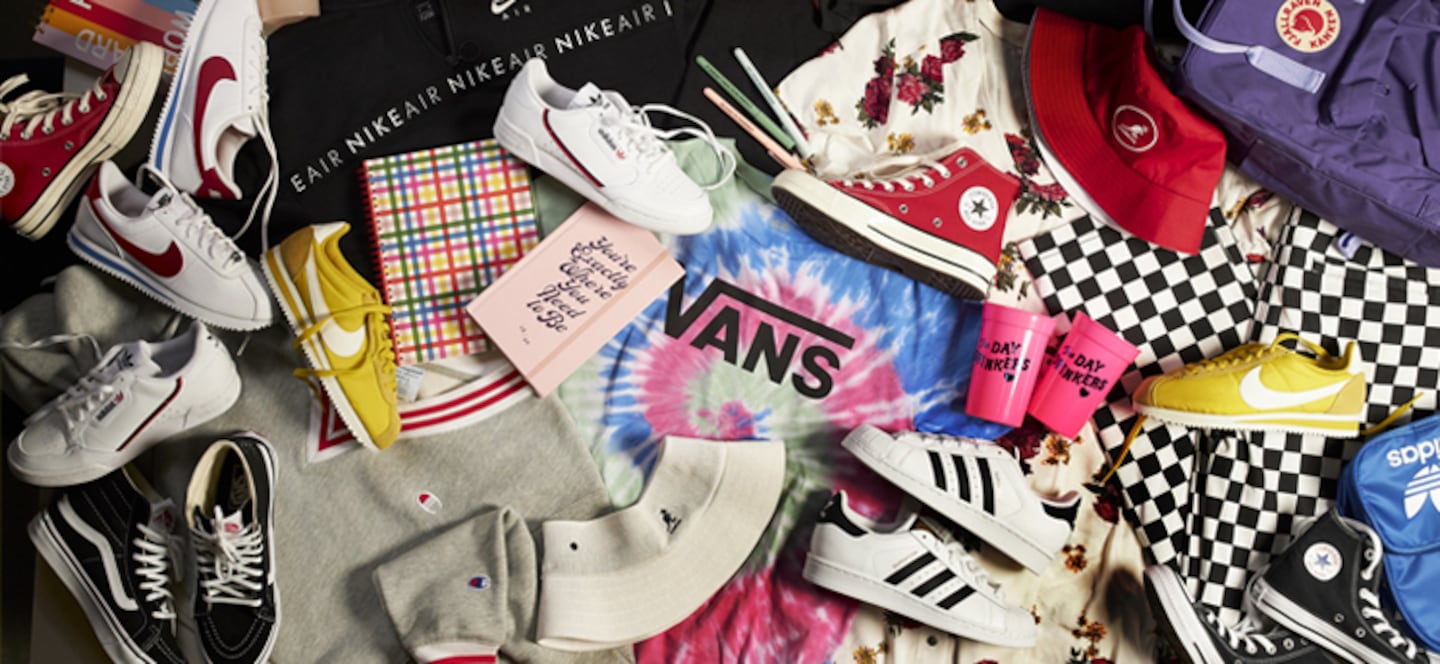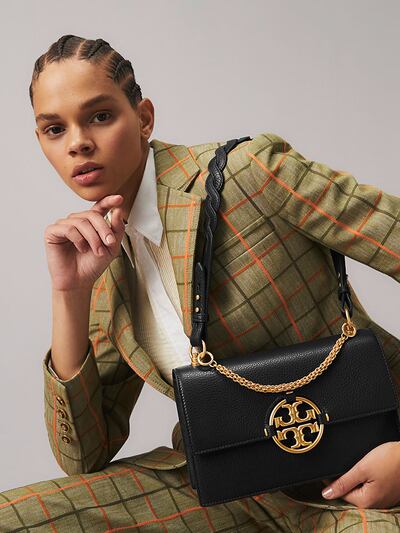
The Business of Fashion
Agenda-setting intelligence, analysis and advice for the global fashion community.

Agenda-setting intelligence, analysis and advice for the global fashion community.

Zappos chief executive Kedar Deshpande has a theory about online shopping. He thinks the reason so many multi-brand e-tailers struggle after they hit a certain size is because they’ve ignored a key element of what made physical department stores unique: price segmentation.
“If you’re looking for jackets, you’ll see a $30 jacket, a $300 jacket and a $3,000 jacket sitting next to each other,” he said. “That would never happen in physical retail, and that is the problem of the specialty experience online.”
Of course, today’s consumers shop across the pricing spectrum: a person who makes weekly pilgrimages to Target might also visit Hermès on the regular. But Deshpande, who joined Zappos in 2011 — shortly after it was acquired by Amazon for $1.2 billion — is hitting on a key pain point for online players. The bigger you get, the harder it gets to surface everything you offer.
Segmentation, in terms of price, but also interest and category, are key to Deshpande’s plan for Zappos, where he took over as chief executive in August 2020, just months before longtime leader, Tony Hsieh, was found dead at his home in Connecticut last November.
ADVERTISEMENT
Even before his passing, Hsieh cast a long shadow. A visionary who normalised buying shoes online by offering best-in-class customer service — “delivering happiness,” as he would say — Hsieh also fostered a unique internal culture at Zappos, embracing quirky management methods like holacracy, a framework for decentralising management and empowering individuals and smaller teams to make decisions. More than 20 years after its launch, Zappos is one of the biggest sellers of shoes online in the US and likely generates over $2.5 billion a year in revenue, according to analyst estimates. (Amazon does not break out financial performance for its subsidiaries.)
Deshpande has spent a significant part of his first year as chief executive managing both internal and external responses to Hseih’s death, including an exposé in The Wall Street Journal on the followers that enabled Hseih’s “risky lifestyle.” But when it comes to running the company’s operations, he makes it clear that he isn’t looking to revolutionise Zappos, which remains the “gold standard” for customer service online, according to NPD analyst Matt Powell. He does, however, face several threats to the business. Year-over-year sales declined by an average 20 percent each month in 2020, according to data analytics firm Earnest Research, at a time when some other online retailers saw their sales boom.
Like many other multi-brand retailers, Zappos now faces competition from the brands it sells. Nike, which represents an estimated 10 percent of its revenue, according to NPD, has severed ties with the majority of its wholesale partners in recent few years, including Zappos, and refocused on a handful of highly differentiated partners and its own retail channels. Today, there are still hundreds of different Nike shoe and clothing styles to choose from on Zappos, but it stopped receiving new products in 2021. As that relationship winds down, the company will have to find new ways to fill that gap, either by dialing up its business with other brands or further expanding the breadth of its product selection.
“While we are sad to see them go as we’ve had a great and highly valued partnership, the athletic category on Zappos as a whole is expansive,” a company representative said in a follow-up email. “Our running category alone continues to see incredible growth, and we look forward to working closely with our valued brands to support their momentum in fun, creative ways.”
While best known for shoes, Zappos also sells jewellery, handbags, apparel, kids clothing and home goods, including pet products. It is also one of the first retailers to offer a selection of adaptive clothing. Recently, it also started recruiting traditionally direct-to-consumer brands to join the platform, including women’s workwear label M.M.LaFleur, although Zappos continues to buy its products directly from brands via a wholesale model.
But perhaps the biggest challenge of all is Amazon, its owner, competitor and a significant source of its revenue, where it sells on the e-commerce giant’s marketplace. Amazon’s increasing dominance in e-commerce doesn’t bode well for Zappos. The pillars of a strategy that once served it well — fast shipping, great customer service, a broad offering — no longer set it apart.
“Zappos is not as relevant as it used to be,” said Elaine Kwon of Kwontified, a firm that advises brands on e-commerce management. “It no longer has that differentiating trait.”
Amazon also needs Zappos less than it used to, now that it has a better grip on the needs and wants of their shared customer base. In 2014, Zappos owned 19.8 percent of the footwear market in the US, more than Amazon’s 19 percent, according to data compiled by Slice Intelligence (now Rakuten Advertising). By 2020, it owned just 7.5 percent of the market to Amazon’s 24.7 percent, according to Rakuten.
ADVERTISEMENT
Zappos is considered one of Amazon’s most successful acquisitions to date, and yet its relevance to the business is more in question than ever before. “Most of Amazon’s acquisitions fall apart, whether slowly or overnight,” Kwon said.
Deshpande downplays the Amazon issue, insisting that while both companies are “customer-focused,” Zappos runs independently from its parent in terms of strategy. “For us, we are trying to deliver a long-term — not a transactional — relationship,” he said.
However, what analysts see as Zappos’ increasing reliance on Amazon for sales means that the world’s happiest retailer must work harder to set itself apart.

To achieve that, Deshpande wants to recreate the feeling of a physical department store online. In recent years, the company has introduced new retail brands, including the upscale Vrsnl; a standalone site that sells clothing and accessories from more directional lines including Marni, Aries and Kwaidan Editions; and The Ones, a Zappos sub-brand that’s geared toward female sneakerheads. There’s also The Style Room, another Zappos sub-brand that sells influencer favourites including Loeffler Randall and Veja. Deshpande believes the more segmented approach, combined with an increasingly personalised user experience, will appeal to both customers and the brands it wants to sell.
Zappos may also need to share more data with its brand partners. In a recent call with investors, Nike chief executive John Donahue emphasised the importance of capturing customer data — and how that factored into the company’s decisions on which third-party retailers it would continue to engage. “We’ll work with a smaller number of strategic partners… that want to and are willing to share membership data so that we can, together, deliver a very seamless experience, a very personalised experience for our consumers,” he said.
A representative for Zappos said that the company shares customer data points such as demographics, region and purchase channel of choice with its partners as it pertains to their brand. It also guarantees a 24-hour response time to queries, and is working to ensure each brand’s “vision” is properly represented.
But in order to justify its existence, Zappos will need to go above and beyond the norm for both brands and shoppers. Analysts agree that opportunity remains — if the company is able to take that promise of top-notch customer service to another, more unique level.
“Amazon is a great buying experience, but not a very good shopping experience,” Powell said. “There’s no way Amazon can help you buy the right running shoe. The opportunity for Zapppos is to offer up add-ons....,” whether that means new sub-brands or better discoverability on the main site. “Everybody today wants a more personalised experience.”
ADVERTISEMENT
Related Articles:
As the German sportswear giant taps surging demand for its Samba and Gazelle sneakers, it’s also taking steps to spread its bets ahead of peak interest.
A profitable, multi-trillion dollar fashion industry populated with brands that generate minimal economic and environmental waste is within our reach, argues Lawrence Lenihan.
RFID technology has made self-checkout far more efficient than traditional scanning kiosks at retailers like Zara and Uniqlo, but the industry at large hesitates to fully embrace the innovation over concerns of theft and customer engagement.
The company has continued to struggle with growing “at scale” and issued a warning in February that revenue may not start increasing again until the fourth quarter.